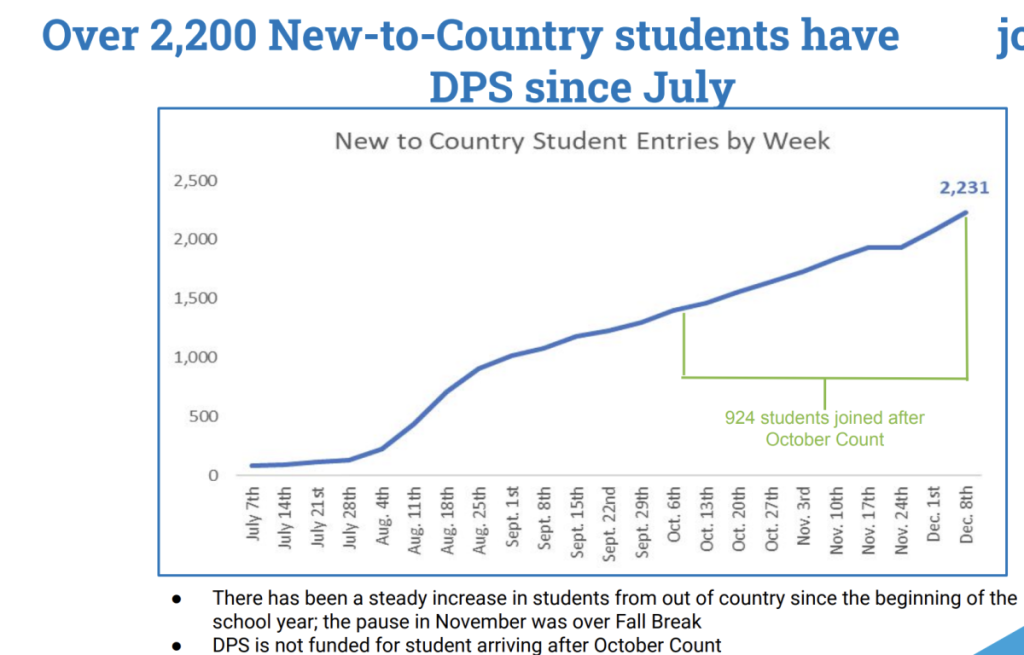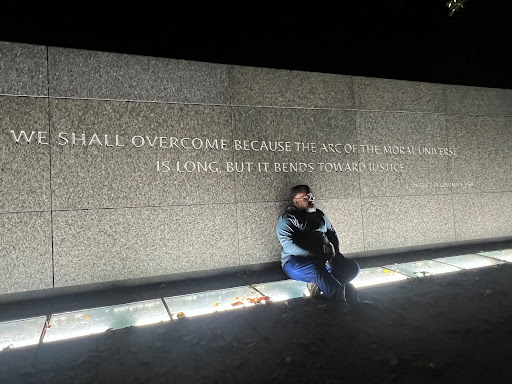Over the past couple of years, I’ve frequently used this space to level pointed and wholly justified criticism of the Denver Board of Education and the leadership of Denver Public Schools.
So it seems only fair, and in the spirit of a new year, to praise the district for its handling of an unanticipated and unprecedented surge of migrant students, who have been bused with their families to Denver by benighted Texas Gov. Greg Abbott.
School staff response to the surge, which has left them stretched thinner than thin, had been nothing short of heroic.
In a presentation to the school board last December, DPS staff laid out in detail the challenges posed to the district by thousands of non-English-speaking students, many with little of no formal education and having suffered traumatic experiences on their trek northward, arriving in waves during 2023, accelerating toward the end of the year.
More than 2,200 new students have arrived since the start of the school year. DPS has been planning for slow, steady enrollment declines for the foreseeable future, and this throws planning into disarray. There’s no way to know how long the influx will continue, how many of the new arrivals will stay, or for how long.
“We don’t want to call this a crisis but it is impacting every level of our system,” board member Scott Esserman said during the meeting. “If we think about the student experience, and we think about the adult experience, and we think about the system experience, it’s impacting every level of all of those.”
The district has responded nimbly to this crisis, despite significant budgetary and logistical challenges posed by the influx.
One issue is that the new arrivals aren’t spread evenly across the city or its schools.
Rather, about a quarter of the district’s schools have been disproportionately affected, and have been scrambling to get the qualified staffing needed to serve these students. According to the slide presentation, schools with newcomer centers, like Place Bridge Academy in southeast Denver and Montclair Academy in east-central Denver have seen big influxes, as have schools with dedicated bilingual programs.
The district needs more bilingual educators, but 98 percent of teacher positions are filled, so paying for them will be a challenge, as will recruiting and hiring. DPS is also trying to act as a social services agency, organizing food and clothing drives, and coordinating vaccine clinics in schools across the city.
All of this creates a substantial budgetary impact, because 924 new students arrived afterthe October pupil count, which determines state funding of districts. According to the DPS presentation, if these students had been counted, DPS would have been eligible for $14 million in additional funding from the state and local mill levy override dollars.
What has caused the influx? Without delving too deeply into a fraught and highly complex national political issue, a combination of failed states across the globe and the failure of Congress to act on revamping immigration policy has resulted in a steady, heavy flow of migrants traveling through Mexico and to the U.S. border, where many have applied for asylum.
While they await for their cases to be adjudicated, some are released into the U.S. Abbot and Florida Gov. Ron DeSantis have bused thousands of migrants from their states to so-called sanctuary cities, including Denver.
These migrants come from all over the globe, with the largest number by far hailing from Venezuela, where an authoritarian government has created an economic collapse of monumental proportions.
According to DPS, between the start of the school year and early December, 2,034 new students arrived, 870 of them from Venezuela, 293 from Mexico,and 168 from Colombia. Other countries and territories represented in the data include Afghanistan, Guam, Honduras, El Salvador, Guatemala, Nicaragua, Peru, and Syria.
No one knows how long the influx will continue, or how many more students will arrive. But the pace hasn’t slowed. It’s hard to make plans when you’re dealing with a moving target on multiple levels, including knowing where the students will settle, since most face unstable (at best) housing situations.
“We’re nowhere near done. This isn’t over. We have a lot more students and families coming in,” board member Esserman said. ”From a projection point of view, it’s incredibly challenging.”
It’s bracing to take a step back once in a while and consider the cascading local impacts caused by geopolitical issues and national political dysfunction.
Even more important, none of us should ignore the impact on human beings of being used as pawns in a political chess match by governors stoking populist fires.




